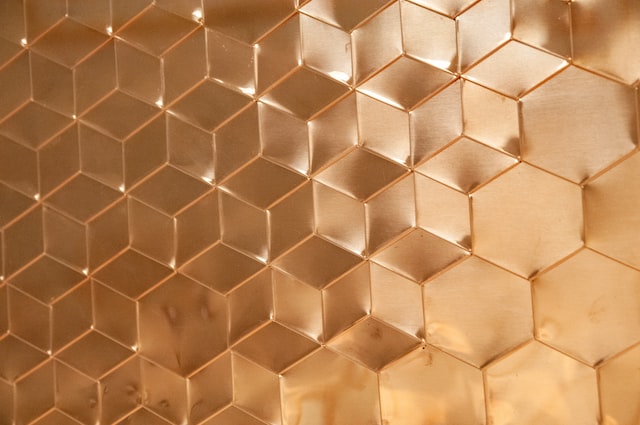Copper’s been around for an insanely long time – in terms of materials, it’s one of the oldest staples of households worldwide. So, why do we use it so much, and why have we been using it for such a long time?
For starters, copper is pretty much ageless. Yep – there are plenty of situations where telling brand-new copper from age-old copper is practically impossible. Check out 50-year-old copper sinks and how they’ve aged to how a cast iron or zinc sink rusts and corrodes. The same goes for bulky stone sinks used in the 18th century.
Copper is practically impervious to age and rust. In fact, copper becomes more effective and better with age. The more you use a copper sink, the quicker its patina will regenerate. If an acidic substance leaves a mark in a copper sink, it generally self-heals quite quickly. And the antimicrobial properties of copper are well-established as well. So, let’s check out how people have used this wondrous material in their households over time.
Copper And Bathrooms
The history of people’s copper use is tightly intertwined with our history in general. One of the earliest copper artifacts ever found is a Mesopotamian copper pendant that’s almost 9 millennia old. And for the first five thousand years, mankind only used copper out of all the metals.
That’s why the earliest water pipes and instances of plumbing we’ve discovered that date back to 3,000 BC in India, were all made out of copper. The same goes for ancient Egypt, where builders supposedly used extensive copper piping for elaborate bathrooms of the rich.
Fast forward to the 1960s, and copper piping would once again become standard in the world of modern plumbing as well. And even before that, plenty of basic dry sinks had copper liners – in some cases, removable ones.
Take a look at any movie with a historical bathroom; chances are that you’ll see an aristocrat with a copper tup – once, it was a sign of wealth and grandeur. In fact, when Benjamin Franklin supposedly brought the first bathtub to North America in the late 16th century, it was also made from copper.
There’s a good reason for this – copper was better at retaining warmth than other materials. And seeing as these historical tubs were filled manually, ensuring that these baths wouldn’t grow cold too quickly was important.
Slowly, copper tubs brought the material into the mainstream – and by the 19th century, we’d start using all kinds of things made of copper. The first water closets had accompanying copper pans too, used for washing up. Slowly, indoor plumbing evolved alongside copper sinks too.
Copper And Recycling
Copper has amazingly high recycling rates when compared with most other metals used in engineering. That’s plainly visible from the fact that most of the copper we’ve extracted since the dawn of the 20th century is still in use – around two-thirds of it, by some estimates.
You can recycle copper repeatedly and not lose any performance – which makes copper vital for increasing sustainability, lowering our carbon footprint, and ultimately saving the environment. It’s one of the few durable materials in an age of increasing disposability and waste.
A Timeless Copper Design
All of the stuff we’ve noted above is great – but those are only practicalities. And as we all know, while practical usability is important for any household item or fixture, there’s something that matters just as much – aesthetics.
One of the reasons that copper has stuck around for so long is its gorgeous, naturally antique look. The fact that copper goods are incredibly strong and resilient is just a neat bonus. However, ask any interior designer, and they’ll happily tell you that a copper sink adds instant character and a sturdy, but aged look to any kind of kitchen.
And while we’re on the subject of aesthetics, that’s another thing that copper fixtures do really well – versatility. Most metals and materials can only be used for a limited number of interior design styles. You don’t have to be a professional decorator to note that rustic lodge interiors don’t use the same materials as a modern, industrial-space area.
However, copper is a neat exception to the rule – it goes just as well with a brutalist, Bauhaus interior as it does with a French country home. Whichever decorum you choose, you’ll know that a copper sink or bathtub remains a great fit.
Maintaining Copper Sinks
Of course, while copper sinks are great for all kinds of areas, they’ve also got a few maintenance quirks that you need to know about. Plenty of liquids and items can (temporarily) remove the patina from a copper surface, and you should avoid spilling them in your sink.
This mostly goes for highly acidic foods, such as pepperoni, citrus, oily stuff, sodas, etc. The same goes for cosmetics, like shaving cream – and abrasive chemicals you’d use to clean other surfaces. Make sure to avoid them if you want to maintain your copper sink properly.


